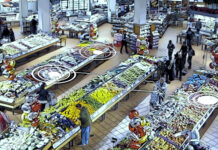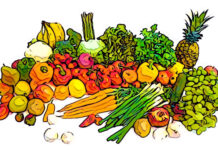Animal By-Products (ABPs) represent a resource with significant potential for extracting high-value-added materials, substances, and compounds, aligning with the principles of a circular economy.
Over the decades, European legislation has evolved to regulate their use based on thorough analyses aimed at mitigating any potential risks to human health, animal health, and environmental integrity.
Below, we explore the state of the art regarding ABPs and their European regulations, the challenges in their application in certain Member States like Italy, and a focus on opportunities in the fishing sector.
1. From waste to by-products: the evolution of European regulations
The European legislator introduced the framework for ABPs, initially defined as ‘animal waste’, with Directive 90/667/EEC. This directive focused on risk prevention, particularly microbiological risks, associated with the management and disposal of these materials. Regulation (EC) 1774/2002 later introduced the concept of ‘Animal By-Products’ (ABPs) without altering the foundational principles of the legislation.
The Animal By-Products Regulation (EC) No. 1069/2009 further strengthened the framework by introducing specific traceability requirements and harmonizing official controls to achieve the goal of safeguarding public health. (1) To this end, implementing measures were defined through Regulation (EU) No. 142/2011, which aims to facilitate the use of ABPs in various non-food supply chains while mitigating risks associated with their nature.
2. Animal by-products: definition
The definition of animal by-products includes:
- whole bodies or parts of animals;
- products of animal origin or other products obtained from animals not intended for human consumption, including oocytes, embryos, and sperm;
- all derived products obtained from their processing.
The classification of these materials as ABPs can result from the application of specific legal provisions (by law) or an irreversible decision by the operator (by choice). In both cases, materials classified as ABPs cannot be used for human consumption.
3. ABPs: three categories in the European Union
The ABPs Regulation classifies these materials into three categories based on the risks they may pose. Depending on this classification, operators must safely dispose of the products or allocate them to permitted uses (e.g., feed, fertilizers, soil improvers, cosmetics, pharmaceuticals, veterinary medicines, medical devices, fuels). These categories are:
- Category 1: ABPs intended exclusively for disposal through incineration or energy production via co-incineration. Examples: animals culled for controlling transmissible spongiform encephalopathies (TSEs); ABPs containing contaminants exceeding EU or national limits;
- Category 2: ABPs not intended for use in animal feed, such as manure, guano, or frass, or ABPs unsuitable for human consumption due to foreign bodies. These ABPs are primarily used to produce fertilizers and soil improvers, as well as other products (e.g., cosmetics);
- Category 3: ABPs permitted for use in animal feed. This includes food products removed from the supply chain due to non-compliance with commercial or manufacturing standards, despite being fit for human consumption, as well as various animals, parts, or products (e.g., eggs, milk) produced in facilities processing animal products for food use.
Operators must classify all ABPs into one of these three categories at the point of generation (starting point of the chain) and manage them accordingly until the end of the chain, adhering to specific conditions for each category, including disposal.
4. Treatment and processing
The treatment and processing of ABPs require the implementation of one of the seven standard methods established by the implementing measures, based on reference requirements (e.g., origin of ABPs). Among these methods, the ‘universal method’ (Method 7) allows the use of any method authorized by competent authorities, provided the operator demonstrates the following:
- identification of relevant risks in the raw material, considering its origin and potential risks given the health conditions of animals in the Member State, area, or zone where the method will be applied;
- the capability of the processing method to reduce identified risks to a significant and acceptable level for public and animal health;
- daily sampling of the final product over a 30-day production period, in compliance with the following microbiological standards:
i) samples taken directly after thermal treatment: absence of Clostridium perfringens in 1 g of product;
ii) samples taken during or after storage: Salmonella: absence in 25 g: n = 5, c = 0, m = 0, M = 0; Enterobacteriaceae: n = 5, c = 2; m = 10; M = 300 in 1 g (2).
Data related to critical control points must be recorded and maintained to allow operators and competent authorities to monitor the processing facility’s operations. This includes particle size, critical temperature, absolute time (if applicable), pressure trends, raw material reloading frequency, and fat recycling frequency.
EFSA (European Food Safety Authority) has evaluated the safety of Methods 2-5 and 7 for inactivating four significant pathogens in the production of processed animal proteins (PAPs) from swine (Category 3) for poultry and aquaculture feed, following the partial lifting of the feed ban. Through various worst-case scenarios based on literature data and authorized Method 7 variants, it was found that Clostridium perfringens spores present the lowest probability of achieving the required reduction (5 log10), though it remains achievable. (3)
4.1. Alternative processing methods
As an alternative to standard methods, operators may adopt alternative processing methods listed in the implementing measures. These can be applied to specific raw materials (e.g., fish silage) for particular uses (e.g., composting, biogas production).
New authorizations for alternative methods can be requested by the Commission, a Member State, or one or more stakeholders. In such cases, EFSA is tasked with verifying the proposed method’s ability to:
- control risks to public and animal health before disposal, and
- reduce these risks to a level equivalent to that achieved by standard methods other than pressure treatment.
Based on EFSA’s opinion, an authorization measure for the alternative method may be adopted or rejected.
5. Operator obligations
All operators producing and/or managing ABPs in the EU or importing them from third countries must comply with a series of fundamental requirements to ensure traceability and the adoption of appropriate risk containment measures. These measures include conditions for use and disposal, as well as related restrictions (e.g., prohibition of cannibalism among animals of the same species). Key obligations include:
- Collection and identification of all ABPs for classification into one of the three categories and their transportation with accompanying documents (e.g., commercial documents, health certificates);
- Traceability. Operators must maintain records of batches, commercial documents, or health certificates, along with systems or procedures to identify ABP suppliers and recipients, sharing this information with competent authorities upon request;
- Registration and recognition. All operators must be registered or recognized by competent authorities before commencing activities and listed in the relevant registers (2). Food sector operators (FBOs) already registered or recognized, as well as those producing ABPs exclusively on-site in farms or other premises where animals are kept, reared, or assisted, are exempt from (sole) registration;
- Hygiene requirements. Design and use of suitable facilities and cleaning procedures for personnel to ensure compliance with hygiene requirements, adequately monitored and documented in line with HACCP principles. Adequate safeguards must be implemented in food businesses to prevent cross-contamination.
6. Official controls
The competent authorities of EU Member States are responsible for verifying operator compliance with ABP Regulation requirements through official controls at facilities or establishments, as well as during transportation activities.
In addition to registration or recognition, they authorize certain activities under the regulations (e.g., use for research and scientific purposes).
Further activities include authorizations for the movement of ABPs between Member States and import-export to or from third countries. In cases of non-compliance, control authorities are tasked with imposing sanctions (administrative and/or criminal) as established at the national level (3).
7. ABPs, by-products, and waste
The apparent similarity between the terms ‘by-products’ and ‘animal by-products’ may lead to interpretive confusion. The Court of Justice of the European Union (CJEU) has provided an official interpretation, clarifying that the two concepts are distinct and governed by separate regulations (4).
The Waste Framework Directive 2008/98/EC explicitly excludes ABPs from the concept of ‘waste’ and its scope of application, except when ABPs are destined for incineration, landfill disposal, biogas production, or composting, leading to their classification as ‘waste’ (not applicable to ABPs as such).
The transport of ABPs cannot be equated to waste transport unless expressly provided for by the relevant legislation (5).
8. National implementation: the case of Italy
The Italian legislator typically adopts an annual ‘European Delegation Law’ to empower the government to issue legislative decrees aligning national laws with EU directives and regulations.
However, Italy has not updated its national ABP regulations, which remain tied to Directive 90/667/EEC (implemented by Legislative Decree 508/1992). Subsequent guidelines, defined in the State-Regions Conference (2013), refer to Regulation (EC) 1069/09 in secondary legislation (6).
These guidelines have led to unique interpretations of EU regulations across regions, inevitably disadvantaging operators seeking to implement circular economy projects.
9. Valorizing ABPs from fishing
The EcoeFISHent project, part of Horizon Europe, aims to develop circular economy models and supply chains that significantly valorize ABPs generated by fishing, aquaculture, and fish processing activities, diverting them from disposal or low-value uses.
The innovative Themis process will transform ABPs into functional derived products by extracting high-value bioactive components (e.g., oils, hydrolyzed proteins) or using them as feed for black soldier flies, which produce frass and other valuable substances while disposing of waste and ABPs.
The ABP Regulation provides a solid foundation for achieving EU circular economy goals, but it is essential that operations can proceed without unnecessary obstacles or disruptions due to inadequate implementation.
10. Provisional conclusions
Animal By-Products (ABPs) represent a promising resource for developing innovative circular economy models but pose significant risks requiring proper management. Treatment and processing can yield high-value-added products, creating new economic and employment opportunities.
The European Commission has already established guidelines to facilitate the use of ABPs (and other former foodstuffs) as feed (7). However, more specific guidelines are needed to enable operators and competent authorities to uniformly implement the ABP Regulation and its implementing measures across the single market.
11. Reform needs
To fully realize circular economy models, the requirement for irreversible ABP status should be eliminated, at least for certain Category 3 materials (e.g., fishery products removed ‘by choice’ for aesthetic reasons) following risk assessment.
This reform, implemented gradually based on risk analysis across various supply chains, could support the concrete implementation of policies and reforms aimed at preventing and reducing food waste, as advocated by the WASTELESS project.
Dario Dongo and Andrea Adelmo Della Penna
Notes
(1) Regulation (EC) No 1069/2009 of the European Parliament and of the Council of 21 October 2009 laying down health rules as regards animal by-products and derived products not intended for human consumption and repealing Regulation (EC) No 1774/2002 (Animal by-products Regulation). Consolidated text as of 14 December 2024 at https://tinyurl.com/3kfca5e3
(2) The list of ABP establishments in Italy is available on the Ministry of Health’s website: https://tinyurl.com/3r9fhky3
(3) Legislative Decree 1 October 2012, No. 186. Sanctioning framework for violations of Regulation (EC) No. 1069/2009 and Regulation (EU) No. 142/2011, implementing Regulation (EC) No. 1069/2009 and Directive 97/78/EC regarding certain samples and articles not subject to veterinary border controls. Available on Normattiva: https://tinyurl.com/56xhs9zx
(4) Court of Justice of the European Union. Judgment of the Fifth Chamber of 3 September 2020. Criminal proceedings against XN et al. Preliminary ruling requests from the Gerechtshof Arnhem-Leeuwarden. Preliminary ruling – Waste – Shipments – Regulation (EC) No. 1013/2006 – Waste subject to prior notification and authorization procedures – Article 1(3) – Shipments subject to recognition obligation – Directive 2008/98/EC – Article 5(1) – Concept of ‘by-products’ – Regulation (EC) No. 1069/2009 – Article 3(1) – Concept of ‘animal by-products’ – Shipments of a mixture of animal by-products and other materials. Joined Cases C-21/19 – C-23/19. https://tinyurl.com/ymrxw3du
(5) See CJEU judgments in Case C-634/17 (ReFood) and Joined Cases C-21/19 – C-23/19 (Note 4).
(6) Agreement between the Government, Regions, Autonomous Provinces of Trento and Bolzano, and Local Authorities on the document: “Guidelines for the application of Regulation (EC) No. 1069/2009 of the European Parliament and of the Council of 21 October 2009 laying down health rules as regards animal by-products and derived products not intended for human consumption and repealing Regulation (EC) No. 1774/2002”. Rep. Acts No. 20/CU of 7 February 2013. https://tinyurl.com/mvchex22
(7) Commission Notice — Guidelines for the feed use of food no longer intended for human consumption (C/2018/2035). https://tinyurl.com/58xc9xb3









